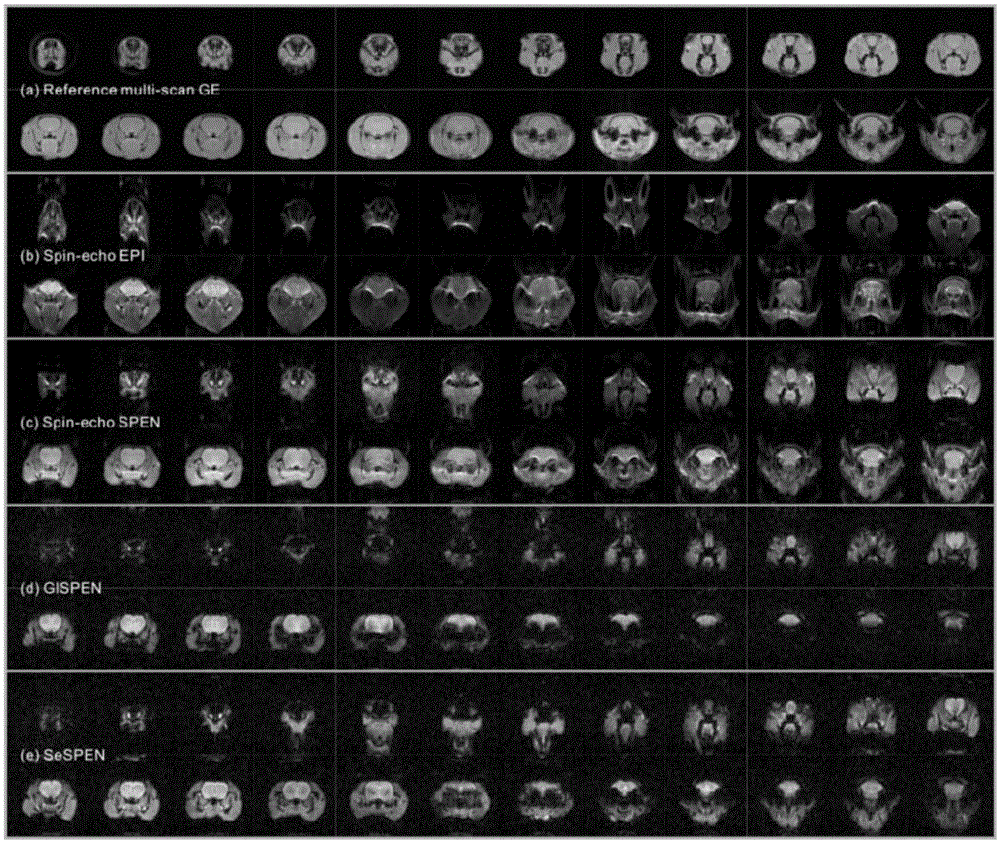Multilayer super-rapid magnetic resonance imaging method based on segmental excitation space-time coding
A technology of magnetic resonance imaging and space-time encoding, which is applied in the direction of measuring magnetic variables, measuring devices, instruments, etc., can solve the problems of sampling signal attenuation, image signal-to-noise ratio reduction, and large absorption rate, etc., to slow down signal attenuation and reduce SAR value Effect
- Summary
- Abstract
- Description
- Claims
- Application Information
AI Technical Summary
Problems solved by technology
Method used
Image
Examples
Embodiment
[0047] The multi-layer ultra-fast magnetic resonance imaging method based on segmental excitation spatio-temporal coding is demonstrated on live Wistar rats to verify the feasibility of the present invention. Experimental tests were performed on a Varian7T imager (Agilent Technologies, Santa Clara, CA, USA). The imaging sample used in the experiment is about 300g live Wistar rats. Before the experiment, the rats were gas anesthetized with isoflurane mixed with oxygen, and the corresponding experiments were carried out after the mice entered a dormant state. Before the experiment, the rats were fixed on the experimental bed, and then introduced into the magnetic resonance imaging machine. On the operating table of the magnetic resonance imager, open the corresponding operating software of the magnetic resonance imager, and locate the part of the rat of interest. Here, the brain of the rat is selected for Axial plane imaging. Tuning, shimming, frequency correction and power cor...
PUM
 Login to View More
Login to View More Abstract
Description
Claims
Application Information
 Login to View More
Login to View More - R&D
- Intellectual Property
- Life Sciences
- Materials
- Tech Scout
- Unparalleled Data Quality
- Higher Quality Content
- 60% Fewer Hallucinations
Browse by: Latest US Patents, China's latest patents, Technical Efficacy Thesaurus, Application Domain, Technology Topic, Popular Technical Reports.
© 2025 PatSnap. All rights reserved.Legal|Privacy policy|Modern Slavery Act Transparency Statement|Sitemap|About US| Contact US: help@patsnap.com


